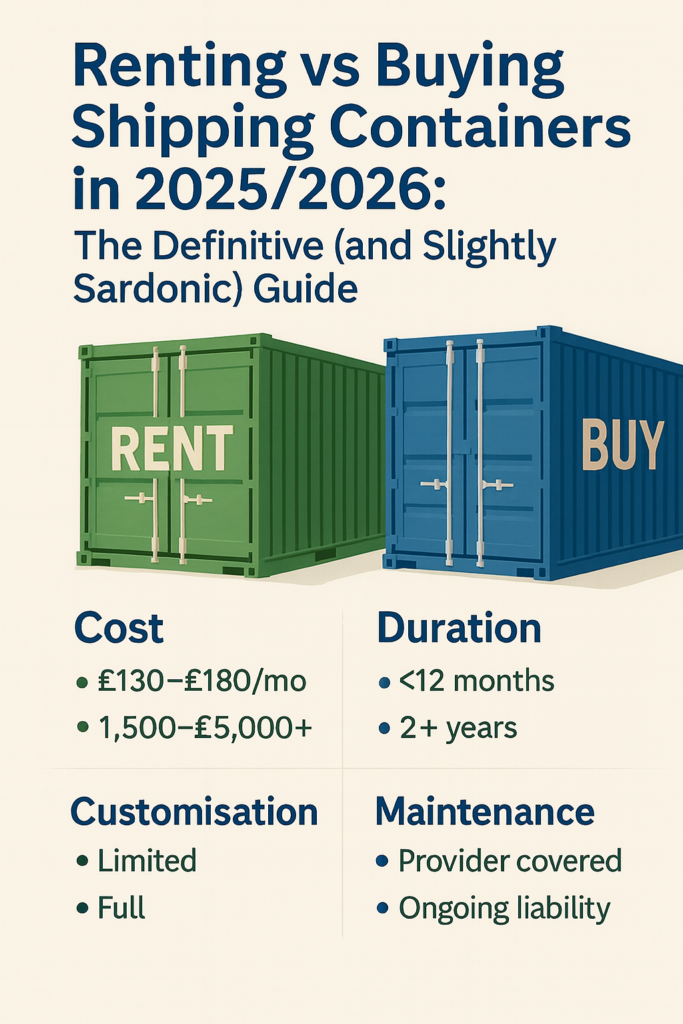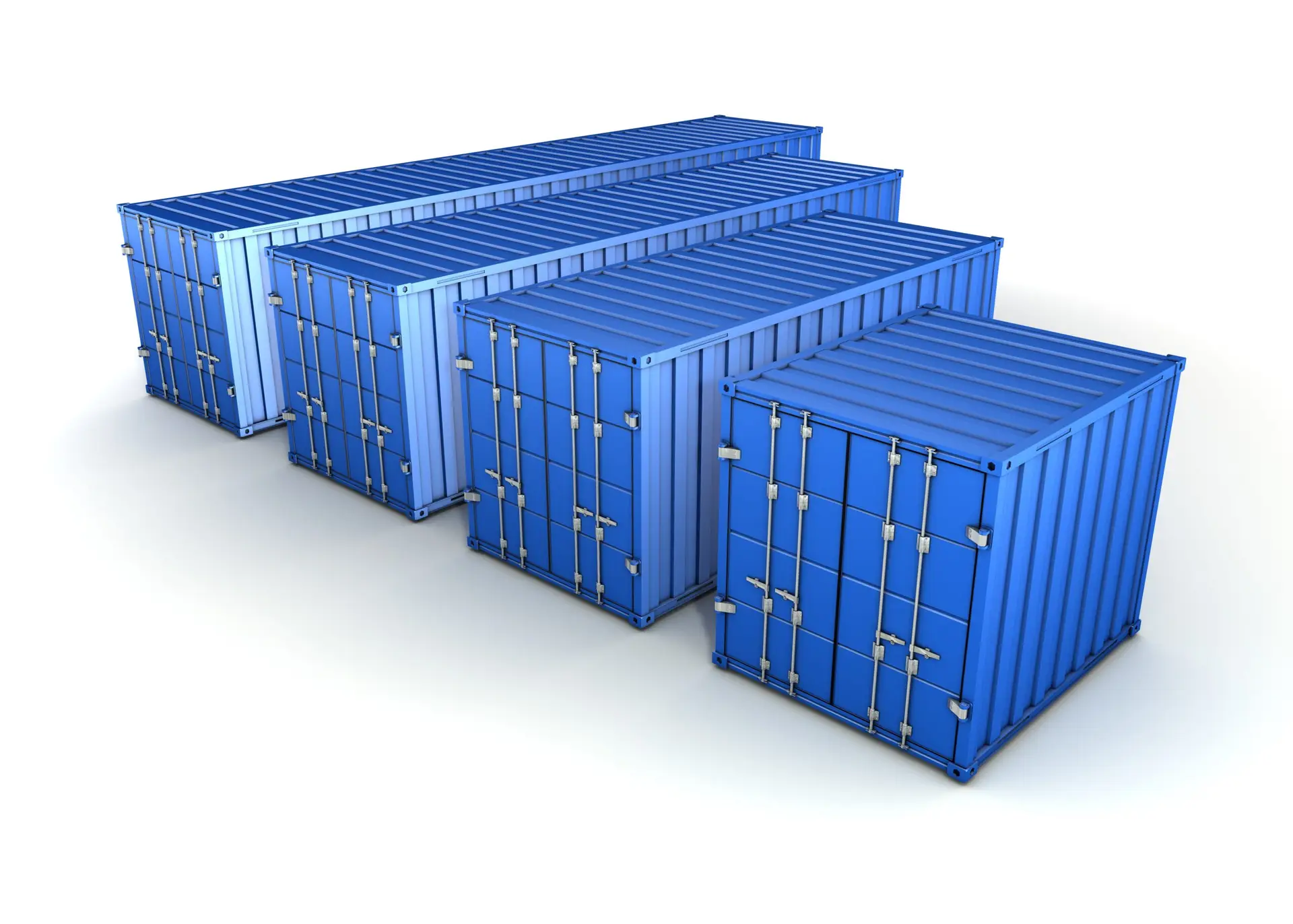Ever wondered whether renting or buying a shipping container in 2025 is like subscribing to Netflix or buying the DVD box set—and which one actually makes financial sense?
We’re living in the era where shipping containers are no longer just for freighting goods—they’re your next garden office, pop-up café, or that gloriously durable storage solution you never knew you needed. The big question: should you rent or buy? Renting whispers “flexibility, minimal fuss, temporary commitment,” while buying screams “customisation, long-term ownership, and resale value”—if your wallet can take the hit. But where’s the line in 2025?
Well, here’s the twist: global demand for containers is rising, with the market projected to balloon from roughly USD 11.9 billion in 2024 to USD 21.5 billion by 2033—so costs are anything but frozen in time. Add in booming e-commerce, smart container tech, and sustainability trends, and suddenly, whether you rent or buy isn’t merely a financial question—it’s strategic.
This guide will walk you through the current cost comparisons, timeframe sweet-spots, emerging trends, and practical scenarios—complete with witty, expert narration. By the end, you’ll know if renting is your short-term fling, or buying is the long-term relationship you should actually invest in.
Cost Breakdown: Rent vs Buy in 2025
Renting: UK monthly average £130–£180, delivery ~£150–£350, collection £150+, totalling ~£1,800–£2,400 per year.
Buying: One-off cost typically £1,500–£3,000 (used 20 ft) or up to £5,000+ for new/40 ft high-cube, plus delivery ~£150–£350.
Break-even: roughly 14–20 months renting vs buying.
Disclaimer on Pricing: All container prices and rental costs mentioned in this article are indicative based on 2025 market averages. Actual prices will vary depending on condition (new or used), size, modifications, delivery distance, supplier rates, and global steel market fluctuations. For an accurate, up-to-date quote, please contact Cubus Containers directly.
Duration Sweet-Spots
- Short-term (<12 months): Renting is the clear winner.
- Medium-term (1–2 years): Mixed—run the numbers and check resale potential.
- Long-term (2+ years): Buying is more cost-effective and opens modification possibilities.
Customisation & Control
Renting: Limited to no modifications allowed. You must return it looking like it arrived.
Buying: Go wild—paint it hot pink, insulate it like it’s Antarctica, or turn it into your own mini-empire.
Maintenance & Risk
Renting: Provider handles most maintenance; low concern about wear and tear.
Buying: You’re on the hook—rust, roof debris, hinge lubrication all become your responsibility.
Market Trends & Forecasts
– Global shipping container market growing at CAGR 6.72% (2025–2033) from $11.9B in 2024.
– Europe (including UK) emphasises sustainability, IoT, and advanced tracking.
– Used container supply remains tight and expensive into 2025.
Hidden Costs & Logistics
Delivery, insurance, permits, and storing unused containers are sometimes forgotten until the invoice arrives.
Renting usually includes pickup; buying means you coordinate any onward moves yourself.

Case Scenarios (Your Options Demystified)
- Building site storage (<6 months): Rent.
- Growing business needing semi-permanent office: Buy—customise, then resell later.
- Event or seasonal promo space: Rent for ease and flexibility.
- Permanently needed storage/workshop: Buy, own, and design it your way.
Pro Tips (2025 Edition)
- Ask suppliers about “buy-back” schemes—they help hedge downturns.
- Watch seasonal pricing—autumn/winter often brings better deals.
- Check local steel prices—steel drives container costs.
- Look out for smart containers with IoT tracking—may sway rent vs buy.
- Remember resale: a well-kept container holds value, especially near ports or cities.
Case Study: Build-A-Flower’s Pop-Up Project (Spring 2025)
Build-A-Flower, a quirky indie florist in Manchester, decided to open a temporary container pop-up at a local festival. They needed flexibility for three months and minimal effort on set-up or take-down.
They rented: Cost ~£160/month, delivery/collection £300 total.
Total cost: £780 for the season (three months)—and zero hassle afterwards.
If they had bought, even a second-hand 20 ft container (£2,000) would’ve net them nothing—and left them with a storage headache.
Meanwhile, their sibling company, Build-A-Greenhouse, chose to buy a 40 ft used container (~£3,500). Over two years, they converted it into off-season nursery storage, added insulation and shelves, and eventually sold it for £2,500 after moving to bigger premises. Net cost £1,000 for two years of bespoke storage and zero rental nightmare.
Lesson: Short-term? Rent it. Long-term and custom? Buy it. The maths—plus the resale value—makes sense.
Featured Quote: “If your container is more of a temporary fling, rent. But if it’s built to last—and accessorise—buying is your committed partner.”
Thinking of renting or buying a shipping container in 2025/2026? Chat with Cubus today for a tailored quote—whether it’s a fling or a forever deal, we’ll help you container-tact with confidence.
More Great articles










